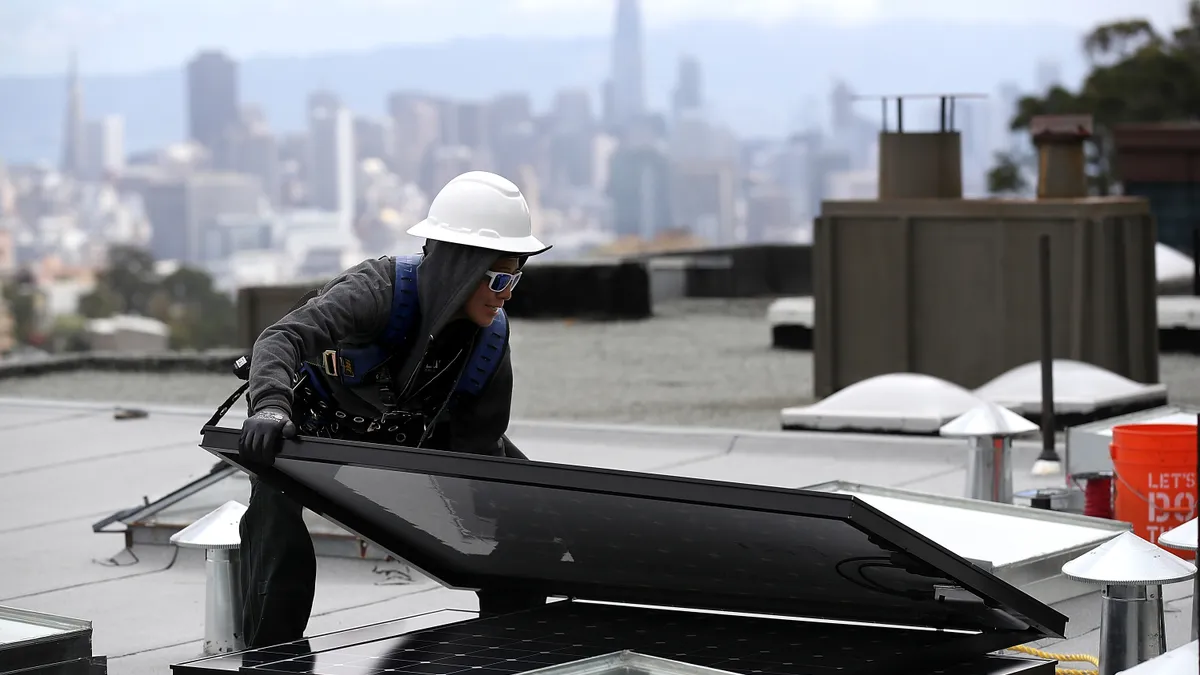What does the sustainable city of the future look like, and how do we get there? Federal and state officials, sustainability experts and a climate tech CEO speaking at a Washington Post Live event on April 5 answered those questions. The “This Is Climate: Sustainable Cities” event left participants with the following takeaways:
Equity work may require a shift in perspective.
To center equity in their sustainability work, leaders may need to change how they calculate the payback on investments, said Erica Cochran Hameen, director of diversity, equity and inclusion at the Carnegie Mellon School of Architecture. For example, while providing residents with zero-energy houses may cost “a tiny bit more,” cities should consider the savings associated with lower energy bills, healthier inhabitants and less severe climate change, she said.
The U.S. model for funding innovation often gives wealthy people access to climate tech first, said Donnel Baird, CEO of BlocPower, a company focused on “greening” older urban buildings. He pointed to Tesla, which produced luxury electric vehicles before developing a more affordable, mass-market car. That model should be flipped on its head to promote equity, he said.
“Can you come up with an affordable mass-market solution first and then apply that across sustainability services and products?” he asked.
The Biden administration, for its part, hopes to instill a long-lasting ethos of environmental justice both at the federal level and nationwide, said Brenda Mallory, chair of the U.S. Council on Environmental Quality.
Local needs should drive the search for funding, not vice versa.
The Biden administration made historic investments in climate, but the money should be spent carefully, said Harriet Tregoning, director of the New Urban Mobility alliance at the World Resources Institute.
The funding could be used to address climate change and equity in a way that improves people’s lives — or “it could absolutely be used to just lock us into what we're already doing,” she said.
While many venture capitalists are eager to fund sustainability and climate tech, Baird cautions against relying on those investments to set climate policy and priorities.
Cities need federal, state and local money, he said, pointing to the hypothetical example of “folks in Pittsburgh getting together and saying, ‘This is what the city of Pittsburgh needs. We don't know if people in Silicon Valley understand that, but we are going to raise our own pool of capital and make the investments in the green infrastructure that we need in our city.’”
As the momentum for building decarbonization grows, it brings big potential — and some challenges.
Several cities have mandated complete decarbonization of all buildings, BlocPower CEO Baird said. That goal is attainable with existing hardware, software and financing, he said. But a “massive shortage” of skilled construction workers and firms is a barrier, Baird added.
Existing buildings don’t need to be torn down and rebuilt to meet ambitious energy efficiency standards, WRI’s Tregoning said. In fact, older buildings often boast higher-quality construction and materials because they weren’t expected to provide as quick of an investment return as buildings constructed now are, she said.
“That's not how people who built buildings used to think about [ROI], and cities shouldn't think that way now,” she said. “You know, we care about our cities not just for 10 years, not just for 20 years, but for centuries.”
If energy efficiency retrofits are done at scale, Tregoning said, it “would produce an industry that would rival new home construction.”
Climate policy can boost local economies.
Maryland wants climate action to support local jobs and businesses, said the state’s lieutenant governor, Aruna Miller.
A state bill introduced in February would help companies and local governments pay for electric medium- and heavy-duty trucks. Miller said this would incentivize Volvo, which has a manufacturing plant in Maryland, to continue producing those vehicles.
She also highlighted plans to turn a former steel mill site in Maryland into an offshore wind manufacturing hub and public transit investments to address equity issues and help people easily commute to work.
“Businesses are not going to come to the state of Maryland if they can't get their employees ... out of the traffic gridlock,” Miller said.












